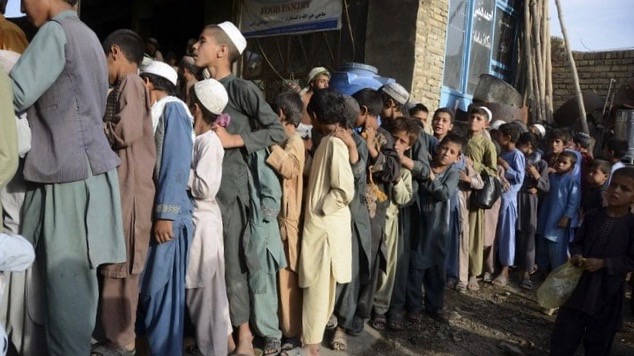Nearly 20 million Afghans are currently undergoing a hunger and food crisis, according to an 18-page report by the Integrated Food Security Phase Classification (IPC). Acute food insecurity has increased the level of desperation of the Afghan people, with basic food prices skyrocketing. The economic fallout of the US-imposed sanctions on Afghanistan following the takeover of the Taliban last year, as well as drought conditions in the country, has made the possibility of a famine very likely.
Between March and May this year, around 13 million Afghans were in desperate crisis, as per the IPC, which is an internationally recognized famine warning system. Around 6.6 million people reportedly are facing an IPC Phase 4 level emergency characterized by large food gaps and lack of access to food.
“With 38% of the population targeted for humanitarian food assistance, nearly 20 million people, representing half the country’s population, are still experiencing high and critical levels of acute food insecurity,” IPC’s findings note.
Save the Children claimed in its report on May 9 that as many as “9.6 million children are going hungry every day” in Afghanistan, with a large percentage of them sustaining themselves only on tea and dry bread. Some people are taking desperate measures and even selling their kidneys to hospitals in exchange for money.
The IPC report notes at least 20 million people remain in need of assistance, especially in the remotest province of Ghor where “nearly 20,000 people have been reportedly found are facing acute vulnerability or Catastrophe (Phase 5) and should be immediately offered assistance otherwise situation will get worsen in this province.”
📍Afghanistan
In April, WFP reached 12 million people with food & nutrition support, including 70 families affected by flash floods in Herat & Ghor.
Humanitarian assistance is driving ↘️ severe food insecurity in several regions but the #⃣ of people facing hunger remains high pic.twitter.com/fJnKq0yHGW
— WFP UK (@WFP_UK) May 12, 2022
The two districts of Charsada and Pasaband are the most affected due to their location and challenges in accessing them. No assistance reached these areas during the current period until the end of March.
Some key factors responsible for the current plight of Afghanistan are the rapid decline in international grant support and sanctions imposed by the US in addition to freezing of assets worth USD 9.5 billion belonging to the Afghan central bank.
The failing economy has triggered hunger and acute poverty. The country is experiencing drought, mass unemployment and high food prices. With the ongoing Ukraine conflict, import of cereals has also been affected.
“By June to November 2022, the number of people facing high levels of acute food insecurity is expected to increase to 4.9 million people,” the IPC report said.
Afghanistan: Nearly 20 million people, or almost half of the country's population, face acute hunger.
UN is scaling up programmes to support farmers & herders, while also training women & creating jobs to support local economies. https://t.co/UkqS8UNBms
— United Nations (@UN) May 9, 2022
A number of neighboring countries have offered to help alleviate the food shortage, such as China which recently delivered five batches of food supplies, providing over 6,000 tons of food aid to Afghanistan amidst the humanitarian crisis. The UN has stated that the country requires at least USD 4.4 billion to avoid a food crisis.





